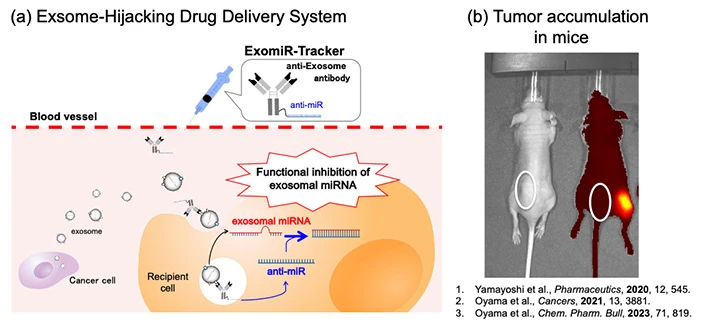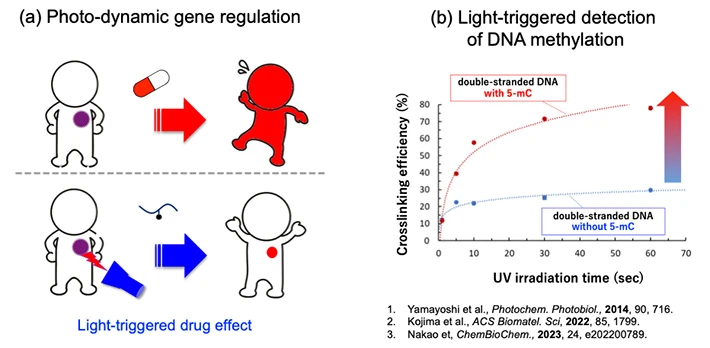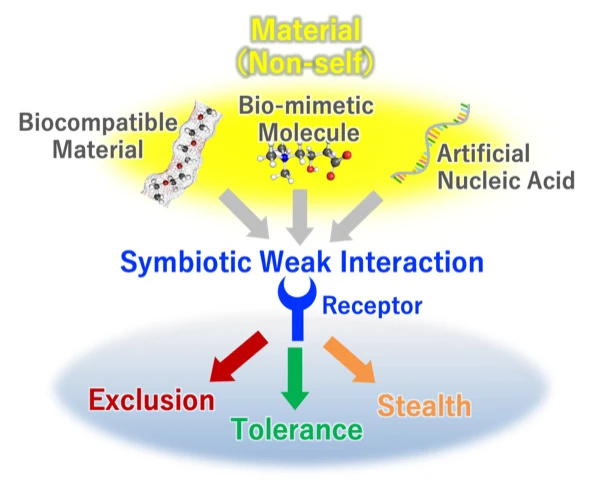Research
Exosome-hijacking drug delivery system
Cells release vesicles called ‘exosomes’ to transmit information to other cells. Recently, it has been revealed that exosomes secreted by cancer cells carry a variety of molecules that play important roles in cancer metastasis and proliferation. In particular, microRNAs (exosomal-miRNAs) contained in exosomes are attracting attention as new therapeutic targets. We have succeeded in developing novel antibody-oligonucleotide conjugates that hijack exosomes and inhibits the function of exosomal-miRNAs. We are currently working on the practical application of an “exosome hijacking drug delivery system” based on this technology.

Development of light triggered gene regulation technology
Nucleic acid drugs are attracting attention as advanced drugs with fewer side effects because of their ability to bind to target genes in a sequence-specific manner. Using this artificial nucleic acid, we have succeeded in controlling the function of non-coding RNA in cells and specifically detecting DNA methylation. We are also working hard to apply this technology to “genome editing,” which rewrites genetic information.

Material Symbiosis
We refer to the symbiosis between human living cells and materials as “material symbiosis”. The main feature of this research project is to understand and elucidate “material symbiosis” from the mechanism of material recognition through “symbiotic intermolecular communications” by living cells or biomolecules.

MEXT -KAKENHI- Grant-in-Aid for Transformative Research Areas(A) Biophysical Chemistry for Material Symbiosis:https://material-symbiosis.jp/en




